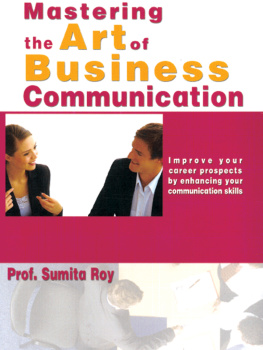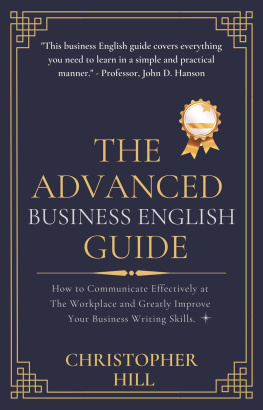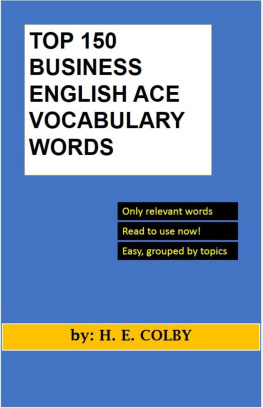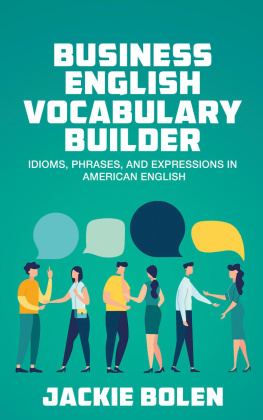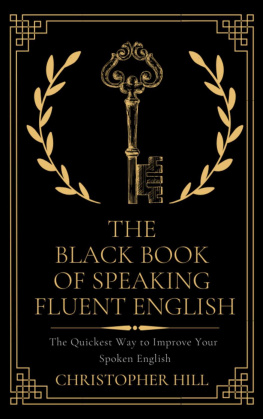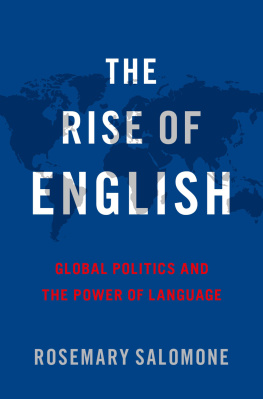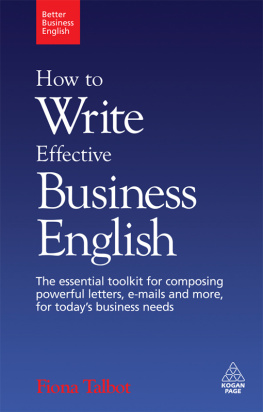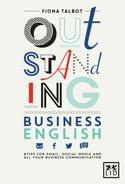
To Twitter: Where random can become specific and where this collaboration was conceived!
Heartfelt thanks to my newly-extended family (with special thanks to the dynamic young professionals in it), to all my clients, and to tweeps who have become friends, for their wonderful, valued support. We grow by sharing experiences/lessons learned, and understanding the power good communication has to build bridges and develop lasting relationships.
Special thanks to my dearest husband, Colin who is by now also an expert in word power skills!
FIONA TALBOT
To everyone who has read and reviewed my writing and to my parents, Mr and Mrs S B Mukherjee, my brother Kallol, my parents-in-law, Mr and Mrs D M Bhattacharjee and my loving husband, Sandeepan, for being so supportive.
SUDAKSHINA BHATTACHARJEE

Note on the Ebook Edition For an optimal reading experience, please view large
tables and figures in landscape mode. |
This ebook published in 2011 by
Kogan Page Limited
120 Pentonville Road
London N1 9JN
UK
www.koganpage.com
Fiona Talbot and Sudakshina Bhattacharjee, 2012
E-ISBN 978 0 7494 6615 2
Contents
You can download FREE additional checklists, templates and worksheets. Simply visit http://www.koganpage.com/editions/improveyour-global-business-english/9780749466138 and click on View Resources. |
Who is the book for?
This book has been designed for go-ahead professionals who understand the need to develop quality business English communication skills in todays time-pressured, results-driven digital world.
How do you use it?
In a nutshell, we encourage you throughout to learn by doing. We give tips on how to design your own customized templates using your preferred variety of English (yes, there are many!) and the right communication style for the task in hand.
So that you serve your readership well, we introduce a totally new concept, by suggesting you add your local splash of colour the glocal to make your business English right for your part of the world or the part of the world with which you are dealing.
You see, businesses need to wake up to the fact that the number of native English speakers using English worldwide is eclipsed by the number of non-native speakers using it. Both sets need to evaluate whether they are using English:
- t hat readers can understand, both on a linguistic and cultural level: and
- t hat readers can relate to personally, as well on a business level.
Thats quite a challenge but were here to help you rise to it, by offering loads of solutions! The book will quite literally open your horizons, and open your eyes to what is going on around you. Youll understand how to distinguish between successful and less successful writing styles whilst at the same time enhancing your reputation as a truly global, modern and totally professional player in todays market place.
The descriptive terminology/spelling we use
- T hroughout the book when we refer to native English speakers we are referring to anyone who speaks any variety of English as their first language.
- I f we need a working description of standard or global English in a business context, we suggest it is the English that displays the least regional variation and, as a result, is most widely understood globally.
- U nless we indicate otherwise, we use mid-Atlantic, not UK spelling. This means we use z in organization, but dont compromise on other words such as colour or favourite except when, in we write favorite, the way its expressed on Twitter. Youll find more on variant spellings later in the book.
- W e use the term native English speaker/writer to mean a person whose first language is English.
- W e use the term non-native speaker/writer to mean a person whose first language is not English.
- F or ease of reference, well also sometimes use the abbreviation non-NE to refer to the non-native English speaker/writer and will refer to non-native English writing as non-NE writing.
Fiona Talbot
www.wordpowerskills.com
Sudakshina Bhattacharjee
https://sudakshinakina.wordpress.com
The world may seem a smaller place; it doesnt mean were all the same. Dialogue helps embrace the commonalities and respect the differences.
The very fact youre reading this book shows you are curious to know more about and enhance your use of global business English: the spoken and written English used as a global language in business and everyday life.
English has always been the ice-breaker language, hasnt it? Wherever you go, for example on holidays to locations outside the UK, or making that all-important business deal, English is very often the language you use, even for an initial conversation or query before going on to the details.
The purpose of this book is to help you grow your understanding and use of English in the global context of things and be aware of the cultural, social and professional environments of your readers, customers or target audience so that you can speak, interact and write clearly, comprehensively and successfully.
Well provide tips as building blocks to success in understanding and distinguishing between the differences in local and global English. If you use the worksheets we provide at the end of each chapter, youll not only consolidate your learning but youll also be able to add your local splash of colour or seasoning to taste. This way, youll ensure that the business English you use is right for your target audience.
By the end of your study, youll be more confident and competent in speaking and writing global business English, a key transferable skill that can take you places.
We refer to readers, customers and target audience as interchange able terms. As a professional, you need to understand the similarities and differences between these three terms.
Reader refers to anyone with whom you are interacting, or aiming to engage in communication. The communication could be a sales proposal letter to a potential customer, an e-mail to a colleague, and so on. We use the word customer both in its most common usage as a person who buys goods or services from a business; and in the broadest sense of the word: to signify a person that you have to deal with in the course of your daily work. The term target audience applies just as much to internal colleagues, to suppliers, to those in charities, or working in the public sector, as it does to external buyers or other consumers. In other words, the target audience of your company or business could be anyone who has or could potentially have an interest in your products or services.
We use many practical examples and scenarios throughout this book. Some relate to standard sales or pitches to customers as, whatever we do, were all also consumers in our private lives. We all have some idea of being on the receiving end of professional and unprofessional services. Many of the topics we cover are what people traditionally understand by business writing, such as letters and reports. But largely because of the internet, writing actually dominates the business world today. It plays an ever-increasing role in scenarios you may not initially have considered as business writing. Think of the use of social media; think of lobbying, politics, charities, fundraising, promotions to name just some examples.
The communication skills and public relations strategies applied in all these fields are crucial not only for the monetary profits of a business, but also something thats arguably just as important: its reputation. Year on year, companies are growing to understand just how precious this is, and for this reason theres an emergent new field of business: that of reputation management. In the final analysis, reputation is something thats easy to break and difficult to fix. This is particularly true with the rapid onset of social media online. So well show you how not to let faulty communications put your organization at risk.
Next page
![Bhattacharjee Sudakshina Improve your global business english: [the essential toolkit for writing and communicating across borders]](/uploads/posts/book/205847/thumbs/bhattacharjee-sudakshina-improve-your-global.jpg)
